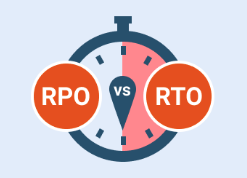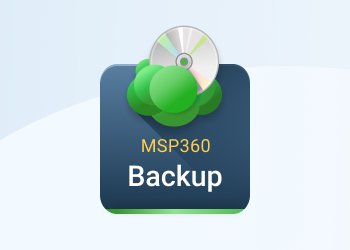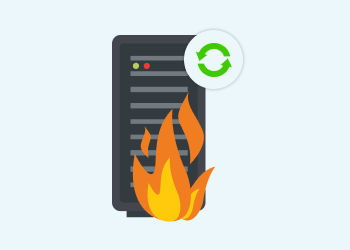We are happy to introduce MSP360 Backup for Microsoft 365 and Google Workspace 4.8, which brings a major addition to the storage experience – built-in managed cloud storage.
With this release, the need for third-party storage setup is entirely eliminated, configuration time is reduced, and administrators can start protecting Microsoft 365 and Google Workspace data immediately upon sign up. Continue reading
Recovery Point Objective – RPO
You recently learned about RTO – one of the key points of any backup and disaster recovery strategy. In this article, you will learn about the Recovery Point Objective (most commonly referred as RPO ) which stands for data loss in cases of disaster, and how it influences backup and recovery strategies. Continue reading
MSP360 at re:Invent 2017 in Las Vegas
Amazon re:Invent is the biggest and the final conference about everything cloud in the world. And it's happening right now. MSP360 team traditionally went there to meet customers, share opinion with other experts and show the latest generation of MSP360 Backup - the 5.8.
Meet us at our booth 530! The last day of the conference is 1st of December. Continue reading
Introducing MSP360 Backup 5.8
MSP360 Backup 5.8 focuses on security, disk storage optimization, and a few other important features highlighted below.
Support for VMware Changed Block Tracking (CBT)
In MSP360 Backup 5.8, we’re improving VMware backup with our support for VMware's Changed Block Tracking (CBT).
Continue reading
Disk Capacity Dashboard in MSP360 Backup 5.8
MSP360 Backup 5.8 now includes the ability to graphically visualize the size of your local disks. The new Disk Capacity dashboard displays folders and folder sizes and facilitates the analysis of disk utilization and how those folders might affect overall backup storage. Read on to learn more about the feature.
Two Step Protect from Data Breaches
In this article, you will learn about some recent data leaks and how to protect from data breaches and keep your sensitive data safe by implementing encryption and IAM policy best practices.
Continue reading
Free Data Recovery Software
This article provides an overview of free data recovery tools and explains what each one can do to help you recover data after a data loss. Continue reading
Sneak peek of Grandfather-Father-Son backup in MSP360 Backup
Designing a comprehensive backup strategy is a task of utmost importance for any organization. In considering various aspects of this strategy, perhaps the most important objective is to strike a balance between a sensible retention policy and manageable storage fees. Traditional retention policies that work off file versions can quickly become too costly for long-term storage.
Real-Life Disaster Recovery Scenarios
What would you do if a disaster strikes? Flood, fire, tornado, a devastating ransomware attack. These all are real-life issues, that any business can face.
We have asked Steve Putnam to tell us about the real-life disaster recovery examples, they have in mind, for the possible disaster striking one of their clients. Read on to learn what Steve Putnam shared with us.
Continue reading
What is RTO?
The Recovery Time Objective (RTO) answers to “How quickly do we need to recover after a failure?”. So, what is RTO really? It's the maximum downtime for a system, application, or service. Continue reading
Backup vs Disaster Recovery Explained
Backup vs disaster recovery can be sometimes confusing: if you tell someone that your computer crashed, the first question you usually hear in response is: “Did you back up your files?” That’s the right question to ask if you’re talking only about personal data or a single computer. When your PC crashes, having a data backup available is usually all you need to restore your normal routine.
Continue reading














